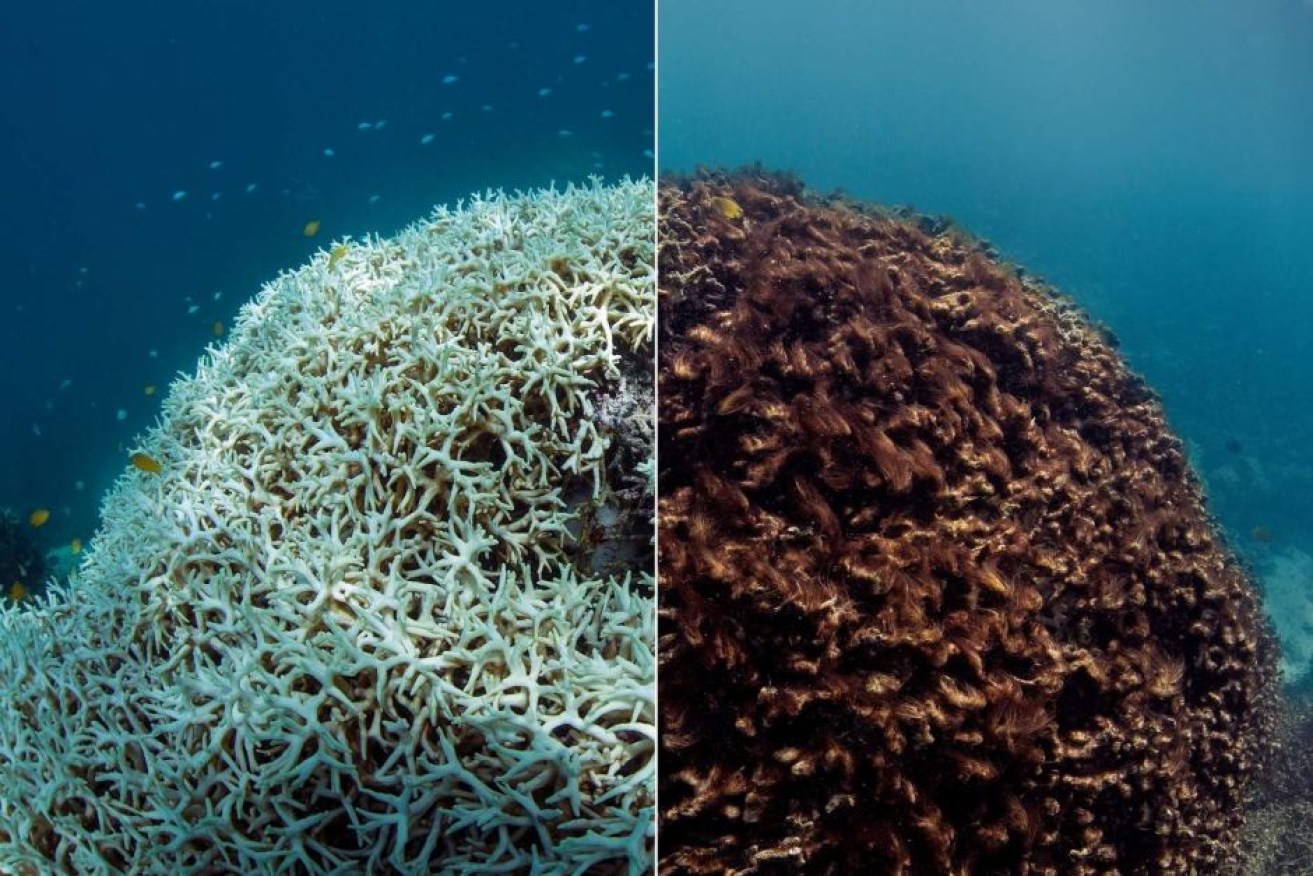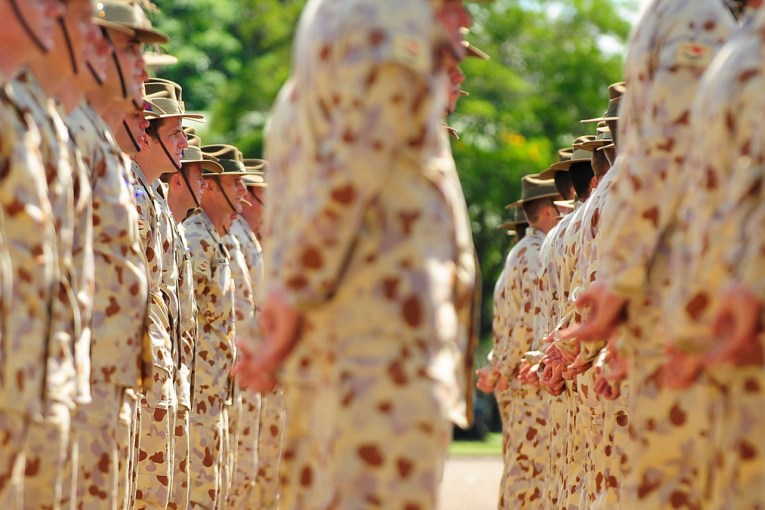Great Barrier Reef coral bleaching could be the new normal by 2050, research finds

Reef experts are hoping this years cooler La Nina's waters will bring a respite from bleaching. Photo: The Ocean Agency
The temperatures that caused last year’s devastating coral bleaching on the Great Barrier Reef will occur almost every year by 2050 unless greenhouse gas emissions are curbed quickly, new research finds.
The research came as new accounts of coral bleaching on the Great Barrier Reef emerged.
Natural history film-maker Biopixel has released video it said showed new bleaching on the reef, and the Great Barrier Reef Marine Park Authority urged visitors to report any signs of bleaching after a second year of unusually high water temperatures.
The sea surface temperatures on the Great Barrier Reef were the hottest on record during February, March and April last year — a degree or more above the long-term monthly averages.
The resulting coral die-off was the largest ever recorded on the Great Barrier Reef, with about two-thirds of corals dying in the 700 kilometres north of Port Douglas in far north Queensland.
So widespread bleaching could happen every year?
If emissions are not cut significantly and quickly, then temperatures like March 2016 are likely to become very common by the 2030s and 2040s, according to Dr Andrew King, a climate scientist from the University of Melbourne who led the research.
In 2030, there would be a 70 per cent chance of getting temperatures similar to March 2016.
In 2050, that chance would be 97 per cent — and it only goes up from there.
“Beyond that [the 2016 temperatures] become much cooler than average, to the point that by the late 21st century an event like 2016 would actually be remarkably cold,” Dr King said.
While coral can recover from bleaching, the most conservative estimates said once in every five years was the most they can tolerate, while it was more widely accepted that most recoveries took 10 to 30 years.
For the research, Dr King ran over a dozen climate models under a low-emissions scenario and a high-emissions scenario to find the chances of getting temperatures similar to or hotter than those experienced last March.
Dr King said the high-emissions scenario was what would occur if emissions were not cut significantly and quickly from their current state.
What’s the best-case scenario?
Unfortunately, it is not terribly encouraging either.
Even under a reduced-emissions scenario the same high water temperatures that caused last year’s bleaching would occur as often as every second year.
“The event that we saw in March 2016 is roughly the kind of event that we’d expect every four years from now on in the next few years, becoming more frequent after that,” Dr King said.
“By the 2030s it would be once every two years.”
What is important to note is that this low-emissions scenario — officially called RCP 2.6 by the Intergovernmental Panel on Climate Change (IPCC) — is at the higher end of what the Paris Agreement is aiming for, about 2 degrees Celsius of warming above pre-industrial levels.
But Dr King said even this is “probably unduly optimistic”.
“We’re not reducing our greenhouse gas emissions at the moment anywhere near that scenario,” Dr King said.
“We’d have to see a very quick turnaround, really strong action in the next decade to reduce greenhouse gas emissions very rapidly and very substantially in order to get anywhere near that.”
Can the reef be saved?
Dr King’s research does show that human efforts to reduce emissions would improve the reef’s prospects.
“If we do take action, we do have some positive influence that results in a reduced chance of bleaching later in the 21st century, relative to if we don’t do anything at all,” he said.

Coral mortality from the northern to the southern end of the Great Barrier Reef following the bleaching event in March 2016. Photo: ARC Centre of Excellence for Coral Reef Studies
But Dr King said the world was a long way off limiting global warming to only 2 degrees; he said the Paris commitments were more closely tracking towards 3 degrees of warming.
“We need much stronger action than we’re seeing from any countries, but Australia in particular is not doing anywhere near enough,” he said.
“We need to reduce our greenhouse gas emissions and we need to make policies that are conducive to that — we need to shift away from power sources like coal … towards renewable energy.
“[Emissions] would need to drop quite rapidly in the next few years in order to have any chance of achieving the RCP 2.6 scenario or indeed the Paris goals of limiting warming to 1.5 or even 2 degrees Celsius.”








